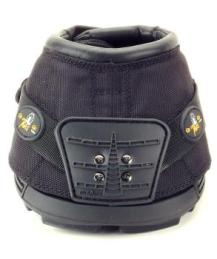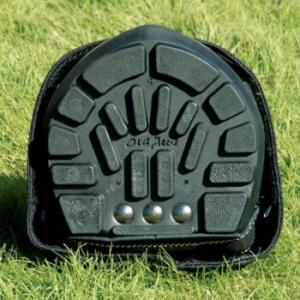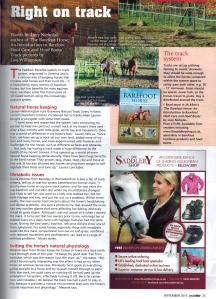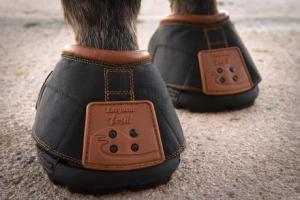This month's edition of Local Rider Magazine featured an article on Autumn Fashion written by The Saddlery Shop's very own Lucy Nicholas! Pick up a copy of the magazine today or read highlights of the feature below.
Lucy says...
"Summer has sadly drawn to an end, and many equestrian fans are starting to think about their autumn and winter wardrobes, in order to make sure they have all the items needed to get through the colder, wetter and muddier months. So, with the new season on the horizon, many fashion-conscious riders are turning their attention to the new styles on offer for this time of year.
Coco Chanel was reportedly the first woman to wear jodhpurs for fashion reasons rather than riding practicality back in the 1920s, having been inspired to copy the riding breeches she saw a friend’s groom wear. But in more recent years, we have seen the fashion world increasingly turn their attention to equestrian fashion for inspiration, with the Fall 2015 fashion collections featuring lots of tweed, and American model and eventing enthusiast Bella Hadid appearing in an equestrian-themed fashion shoot for the next edition of international style bible, Porter.
But returning to our horsey suppliers and retailers, what is in store for horsey fashionistas this year?
Both functionality and fashion is important to chic horse riders, as each clothing item needs to perform in order to keep us warm, dry and comfortable in the saddle and also whilst we are working on the yard. The key colours for the 2015 season include multiple brown shades, from rich chocolate to the paler taupe; stylish burgundy and the ever timeless, classic navy. Fashionable styles include simple, straight collar zip up tops, Gilets and warm hoodies. Cosy fleeces with plainer patterns than in recent seasons are set to become fashionable this year, while no wardrobe is complete with an essential waterproof jacket - look out for more tailored looks with defined waists (ideal when your instructor wants to observe your body position), as well as eternal favourites, bomber-jacket styles.
Our suggestions
For autumn, pairing a smart, collared long sleeved polo shirt with a cosy Gilet provides a smart and functional look, and this season, high-shine quilted Gilets are set to become fashion favourites for anyone who likes a bolder look.
Layering is essential for the colder weather, trapping in warm air between comfortable layers, so when the winter months hit, investing in a thermal vest is a must, topped with a long sleeved shirt and warm jumper such as a fleece. A good quality jacket is an essential item for the avid rider, and blouson styles and bomber jackets are already proving popular here at The Saddlery Shop, especially in smart plain colours, such as black or navy.
Don’t forget as well that during the coming months, the sun sits lower in the sky - hacking can therefore become more dangerous as the sunlight on bright days can obscure motorists’ vision, so be sure that you have plenty of high visibility fluorescent or reflective clothing at the yard for hacking in these conditions. (Wrap-style sunglasses are also ideal, and can be worn under your helmet safely). In recent years, ‘high vis’ clothing has become a lot more fashion friendly, with more flattering styles available too - perfect for those who like to look good in the saddle whilst staying safe.
Finally Waterproof trousers are a must-have for any rider to stay warm and dry during the rainier season.
The Dublin Thermal Waterproof Riding Trousers available are ideal for cold, wet days and have full length zips on the outside of the legs These functional, thermal over-trousers are designed to both ride in and to wear around the yard. The smart trousers can be worn on their own or over jodhpurs or breeches, and will be sure to keep you warm and dry on cold or wet days. They feature lightly padded legs for warmth and ease of movement, and a really smart synthetic suede seat for excellent grip in all weathers - if you have discounted such garments before because you have experienced rustly, nylon waterproof over-trousers previously, you may like to give these a try!"
To see the wide range of rider and country lifestyle clothing available from The Saddlery Shop visit the website at www.thesaddleryshop.co.uk















